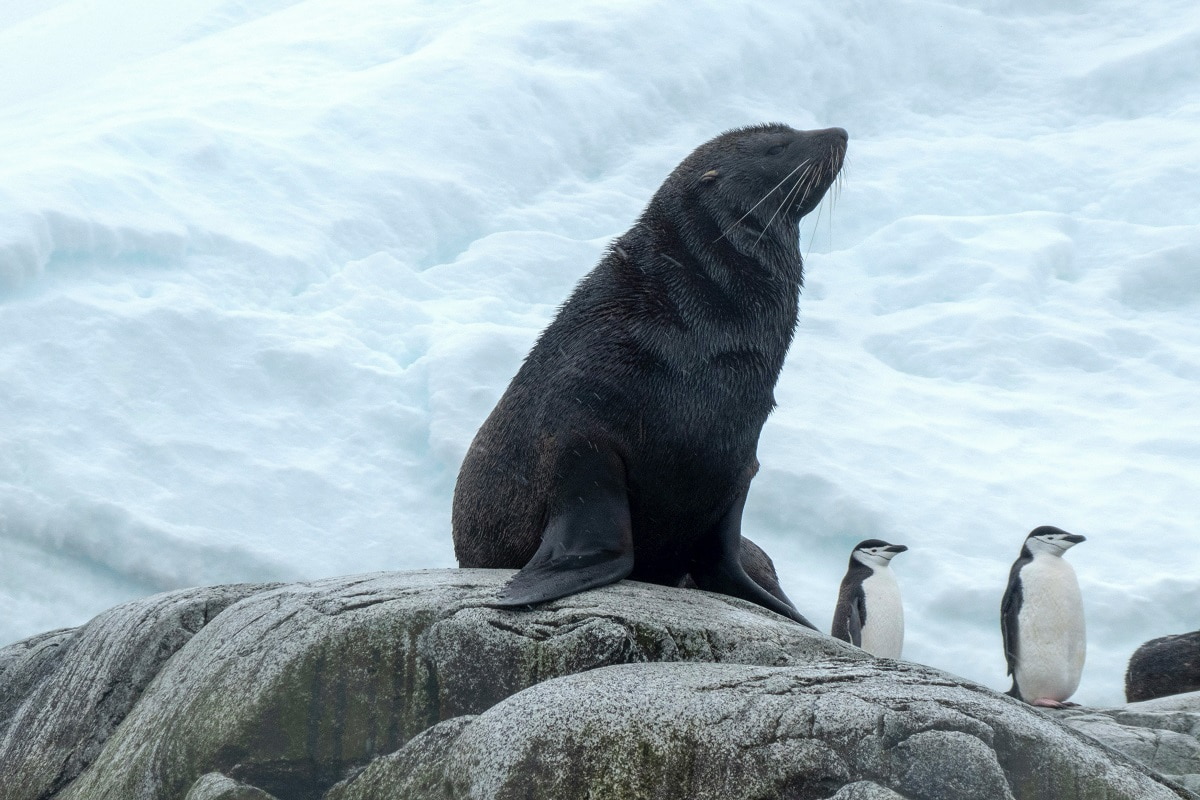Traditionally, the international legal framework governing the Antarctic region – the Antarctic Treaty System (ATS) – has been insulated from the impact of geopolitical conflict. This is no longer the case. While the annual meetings of the ATS largely weathered the Covid lockdowns, the February 2022 Russian invasion of Ukraine has introduced new sources of tension at those meetings. The ATS meetings over 2022–23 witnessed strong statements from some states condemning the Russian invasion of Ukraine and diplomatic walkouts when Russia replied. This is an unprecedented development in Antarctic diplomacy.
Meantime, in the yearly meetings of the Commission for the Conservation of Antarctic Marine Living Resources, several proposals for new marine protected areas that have been on the Commission’s agenda for up to a decade are stalled with no indication that certain states will soften their position. This leads to an annual handwringing over the failure of the Commission to progress these proposals, particularly in the face of climate change heightening the need to protect the marine life of the Antarctic region.
The announcement that China has opened its fifth research station in Antarctica this month, the new Qinling station in the Ross Sea area, has raised concerns among some analysts that China’s increased presence on the continent may pose an increased potential security risk to Australia, although other analysts offer a more sanguine view in this regard.
These developments have led to a sense of pessimism among some commentators and academics about the future integrity of the ATS as an international legal framework as it moves into its seventh decade.

If international law, and in particular the international law that orders the Antarctic region, is judged only by the extent to which it facilitates and achieves international cooperation, then this sense of pessimism would be justified. However, a more nuanced and realistic view of the function and purpose of international law is to recognise its role in not only facilitating international cooperation but also in managing conflict that inherently arises within the international system. International law in the Antarctic region is still operating well if it is allowing states to express differences and manage conflict through the norms, rules, principles, and meetings of the ATS and thereby avoid more deleterious types of conflict.
From this viewpoint, the recent robust statements and diplomatic walkouts at ATS meetings and difficulties in reaching agreement on marine protected area proposals should be viewed as conflict being managed within the system, rather than anything more sinister in terms of the future prospects for the ATS.
Rather than adding to narrow criticism of the ATS based on a misconceived understanding that its only function is to generate international cooperation, we believe it is more productive to focus on how the role of international law might be bolstered, both in terms of generating and enhancing international cooperation, as well as in managing tensions between key states in the region.
An important way in which international law might be bolstered is through a greater understanding and use of inspection mechanisms that are built into the key treaties of the ATS. Inspection mechanisms have a long history in international law and are designed to give the parties to a treaty information on the extent to which other parties to the treaty are complying with the rules. Information gathered through inspection processes, based on the principle of “transparency”, can provide the parties to a treaty with an accurate indication that the rules, norms and principles of a treaty are being reasonably adhered to.
Inspection mechanisms can, therefore, build mutual assurance among treaty parties of reasonable compliance by all states and lessen concerns that some states are seeking advantages by breaching the rules of the treaty.
The ATS was an early adopter of multilateral on-site inspection mechanisms. Article VII of the Antarctic Treaty 1959 allows for any of the 29 Antarctic Treaty Consultative Parties to carry out on-site inspection of all research stations, equipment and ships or aircraft that are embarking or disembarking cargo or passengers. The Treaty also specifically provides for aerial inspection. The 1991 Protocol on Environmental Protection to the Treaty also contains a system of parallel on-site inspections.
The 1980 Convention on the Conservation of Antarctic Marine Living Resources (CCAMLR) contains an intricate system of ship-based inspection whereby observers are appointed by CCAMLR to monitor fishing vessels during harvesting and scientific research activities in the CCAMLR area.
These inspection mechanisms of the ATS are used by the Antarctic Treaty parties on a regular basis. For instance, in 2019–20 there were 11 on-site inspections carried out of Antarctic research stations, Protected Areas and a runway under the Antarctic Treaty and Environmental Protocol.
It is vital that the ATS not rest on its laurels. In this period of heightened international tension, it is essential that the integrity of the ATS be strengthened, particularly through ensuring that states are complying with their treaty obligations. Fuller utilisation of existing ATS inspection mechanisms can make a significant contribution in this regard by building mutual assurance of compliance through:
- Greater use of joint inspections by Antarctic states
- Establishing a regular, planned, program of inspections
- Reviewing the scope of existing ATS Inspection Checklists
The Antarctic Treaty System is a robust one. It is a sound international legal framework based on cooperation between states – with the capacity to manage contentious issues and to withstand geopolitical tensions in other regions of the world. We need to protect and reinforce this system by ensuring that there is trust and confidence that all state parties are operating in conformity with their treaty obligations, especially the non-militarisation provision of the Antarctic Treaty. Enhanced inspection mechanisms can have a key role in providing this assurance.

